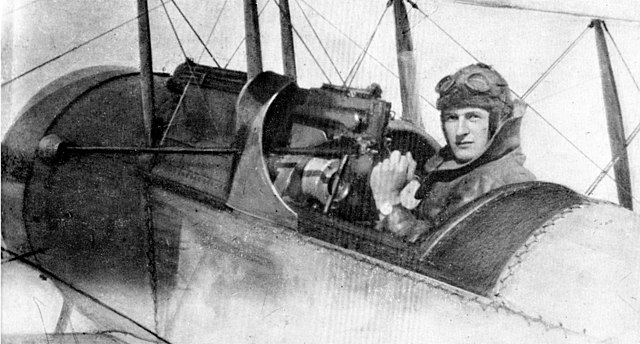The Vickers machine gun or Vickers gun is a water-cooled .303 British (7.7 mm) machine gun produced by Vickers Limited, originally for the British Army. The gun was operated by a three-man crew but typically required more men to move and operate it: one fired, one fed the ammunition, the others helped to carry the weapon, its ammunition, and spare parts. It was in service from before the First World War until the 1960s, with air-cooled versions of it on many Allied World War I fighter aircraft.
A Vickers Machine Gun mounted on a tripod. This example is at York Castle Museum.
A Vickers machine gun crew in action at the Battle of the Menin Road Ridge, September 1917
The cockpit of a Bristol Scout biplane in 1916, showing a Vickers machine gun synchronised to fire through the propeller by an early Vickers-Challenger interrupter gear.
Vickers Mk. II* or III in naval anti-aircraft service during WWII in the Mediterranean
The .303 British or 7.7×56mmR, is a .303-inch (7.7 mm) calibre rimmed tapered rifle cartridge. The .303 inch bore diameter is measured between rifling lands as is the common practice in Europe which follows the traditional black powder convention.
Left to right: .303 British, 6.5×50mmSR Arisaka and .30-06 Springfield ballistic tip ammunition
Longitudinal section of Mk VI ammunition 1904, showing the round nose bullet
Longitudinal section of Mk VII ammunition circa 1915, showing the "tail heavy" design
.303 British Cartridge (Mk VII), manufactured by CAC in 1945








